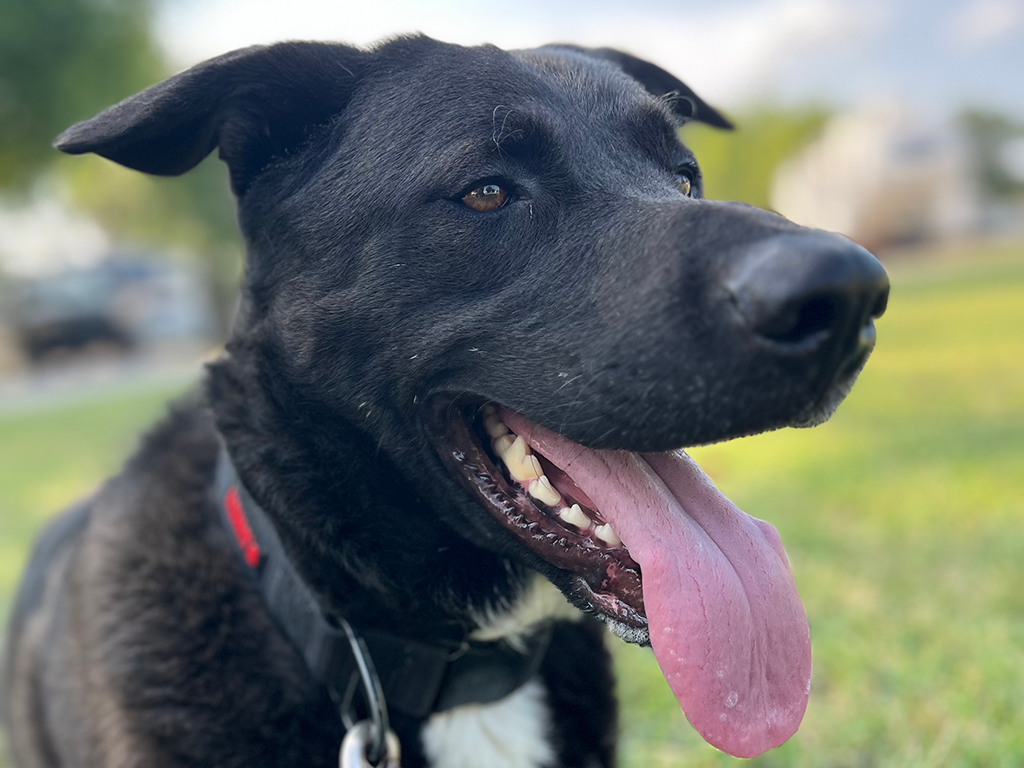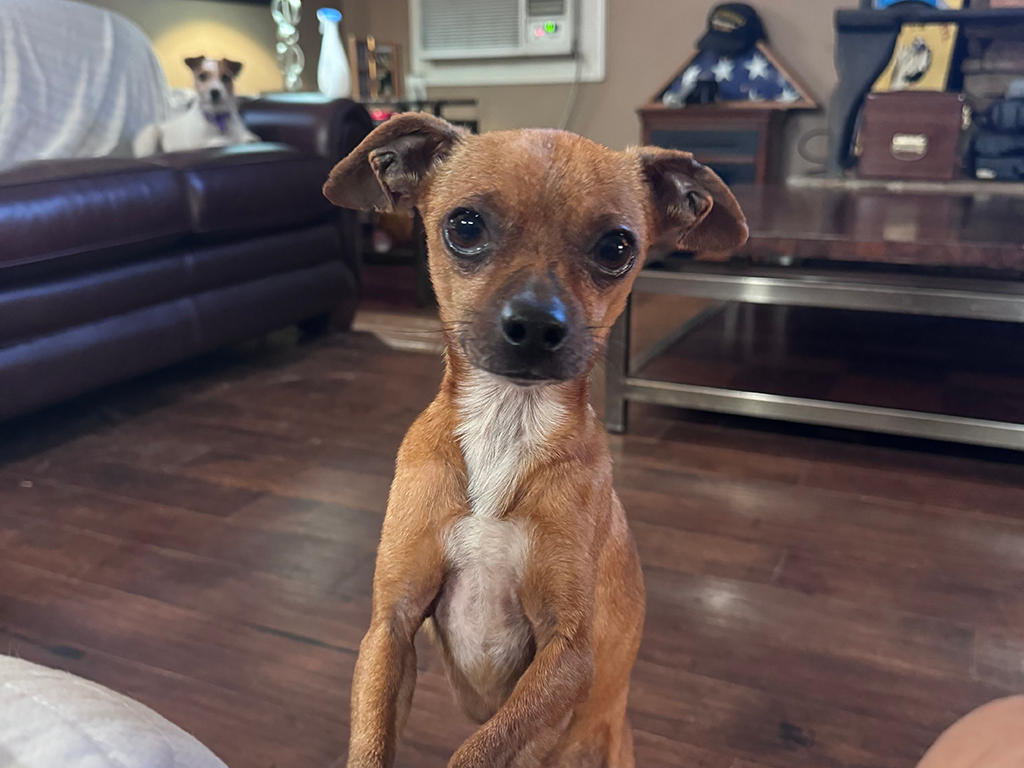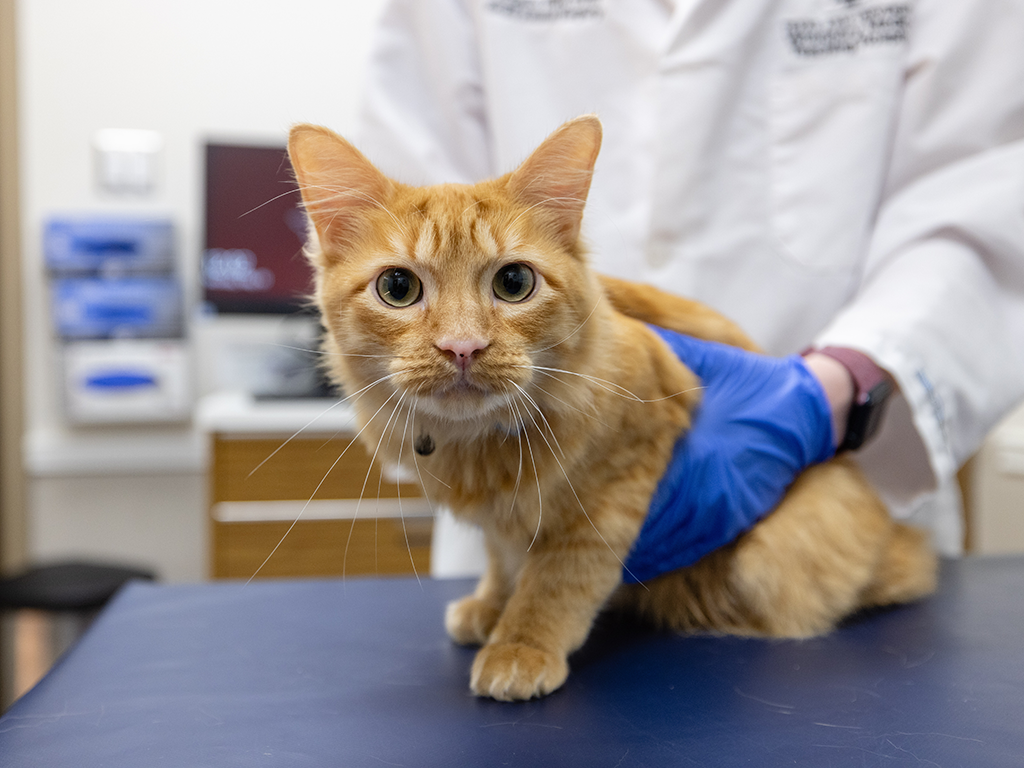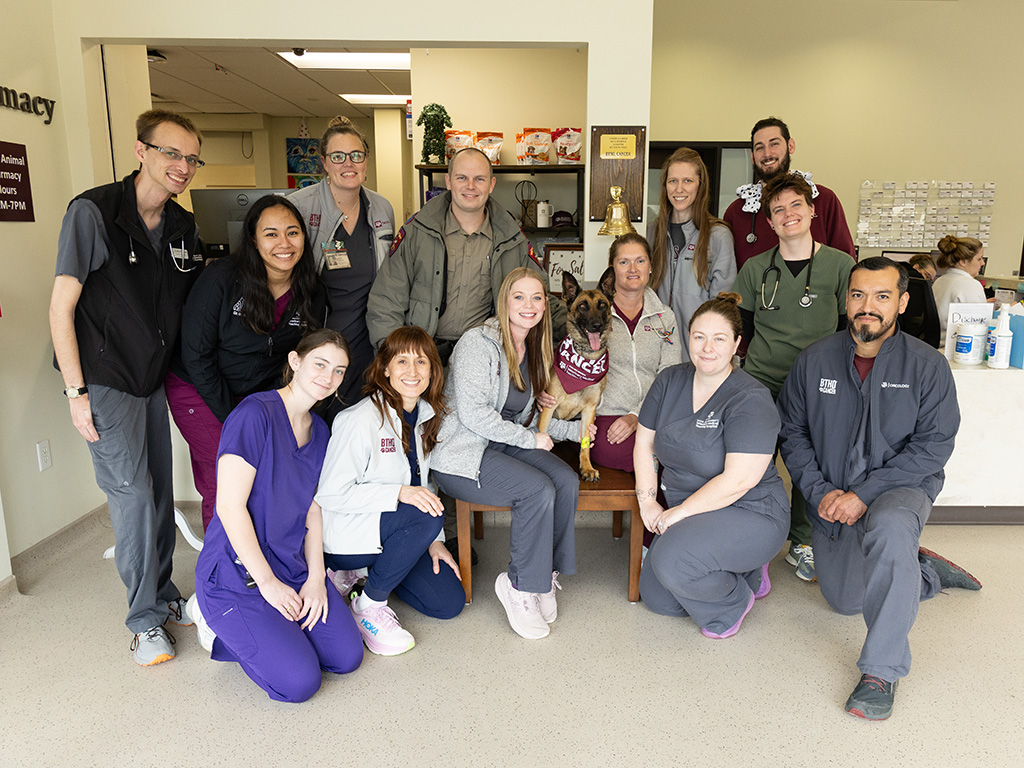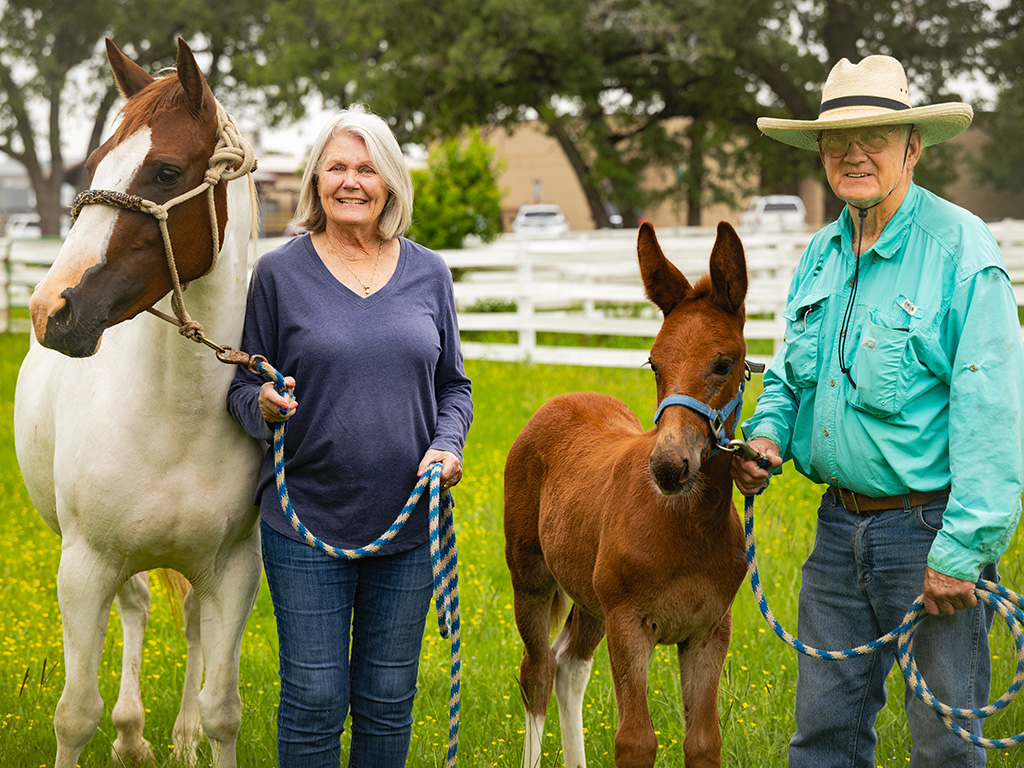Texas A&M Veterinarians Help Donkey Foal Fight Critical Health Issues
Story by Ainsley Treesh, VMBS Marketing & Communications
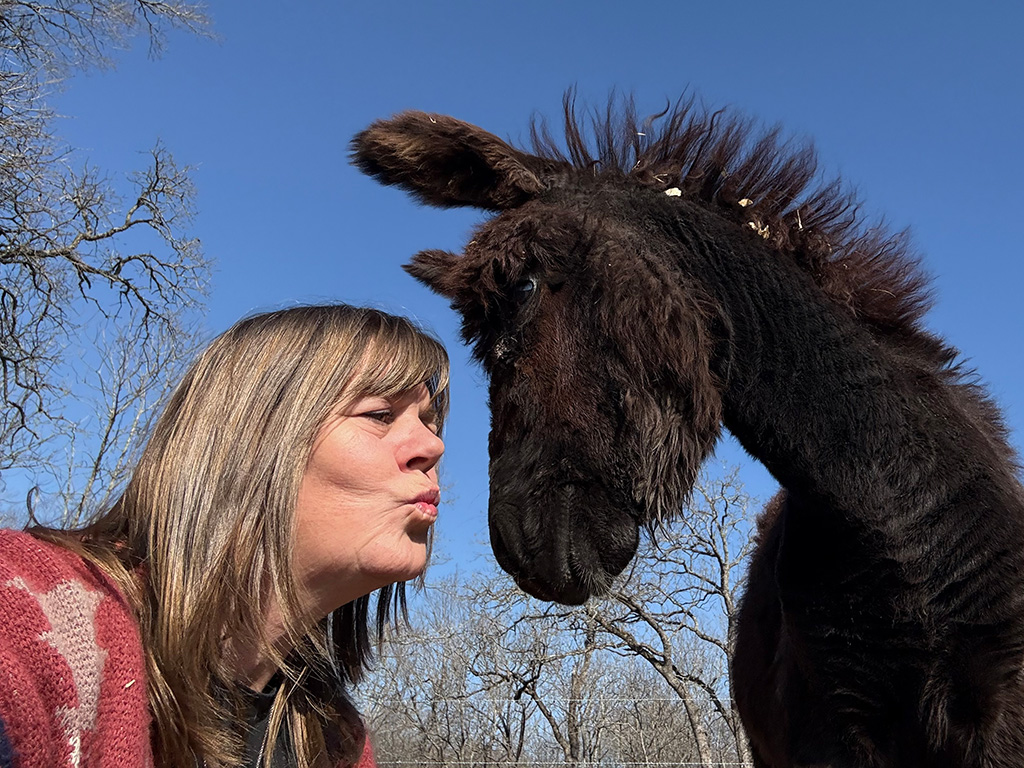
If there is one word that Stefanie Shaver, would use to describe her jenny foal, Shadow, it would be a “fighter.”
“Shadow began her life struggling with several medical conditions,” Shaver said. “She’s pulled through a lot, so for her to be around today is really a godsend.”
At just 2 months old, Shadow was brought to the Texas A&M Large Animal Teaching Hospital (LATH) in critical condition; she was malnourished, dehydrated, and had an infected umbilical cord.
However, during a nearly two-week stay at the LATH, and under the careful supervision of several Texas A&M veterinarians, Shadow fought hard to recover and has returned to her playful self.
In Need Of Rescue
In 2024, Shaver and her husband, Mike, purchased property south of Corsicana, Texas, and after meeting her neighbor’s donkey, she knew she wanted one of her own. She began researching rescues and soon came across a jenny named Bonnie, who, at the time, was pregnant with Shadow.
“When the rescue posted Bonnie, I instantly loved her,” Shaver said. “I had always been told to get two donkeys because of bonding, and I couldn’t think of a better bond than between mom and daughter.”
As Shaver prepared to pick up the pair, the foal started to develop a fever and was taken to a local veterinarian, where she was treated and then moved to Shaver’s property; however, the excitement of bringing the donkeys home slowly faded as Shaver noticed a change in Shadow’s behavior and friendly personality.
“When we got her home, she seemed really strange,” Shaver said. “She was not active, and it was a little concerning.”
Shaver contacted her local veterinarian for a field exam, which led to a heartbreaking diagnosis — Shadow was dehydrated and emaciated, and she was likely to live only a few more days.
The veterinarian suggested Shadow’s only hope was to visit an emergency room.
“I freaked out,” Shaver said. “We needed to get Shadow to an ER, and our vet mentioned Texas A&M. We’re only two hours away, so we called and got her an appointment there as soon as possible.”
Having already experienced the life-saving care provided by Texas A&M veterinarians when her dog, Lucy, needed surgery for a heart murmur, Shaver knew that the LATH was where Shadow needed to go.
A Fighting Chance
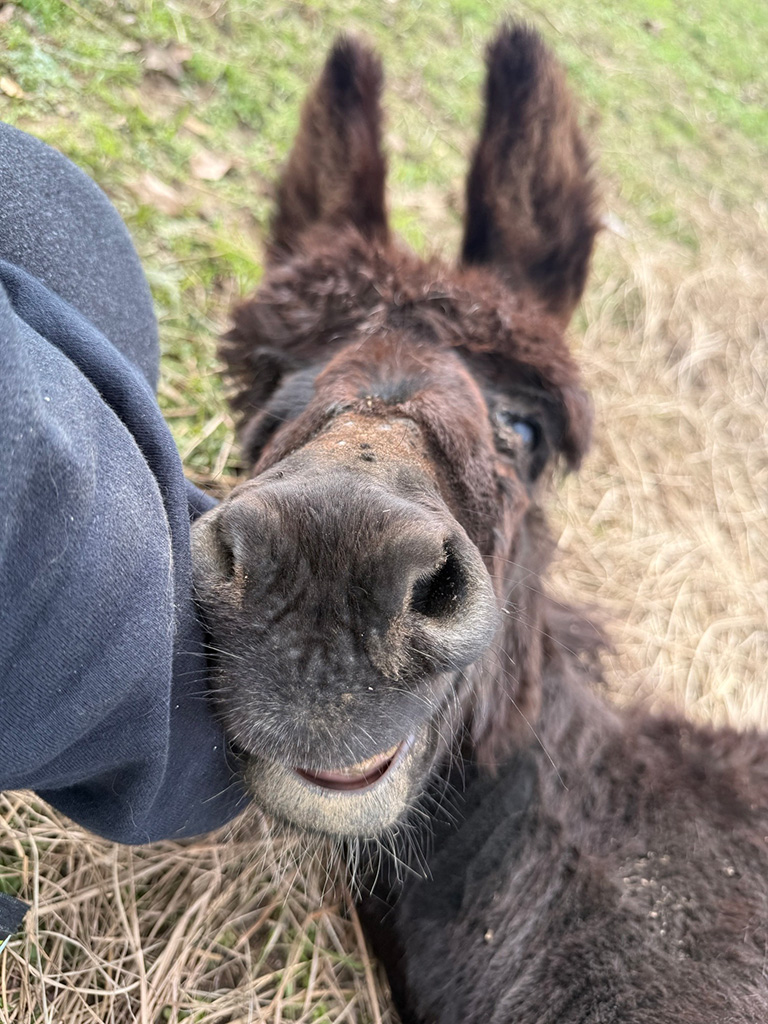
Upon arrival at the LATH, Shadow’s team of veterinarians immediately went to work to uncover the reason for her strange behavior and poor health.
“We completed a very comprehensive evaluation, including blood work, body condition scoring, fecal exam, and ultrasound,” said Dr. Fausto Bellezzo, a clinical associate professor in the Texas A&M College of Veterinary Medicine & Biomedical Sciences’ (VMBS) Department of Large Animal Clinical Sciences (VLCS). “She came in with a history of an umbilical infection, so that helped us direct our evaluation.”
After her initial evaluation, multiple issues raised concern for Bellezzo and his team.
“The thing that was striking was that her body condition score was very low,” Bellezzo said. “She was a two out of nine.”
Body condition scoring is used to determine the amount of fat on a horse and how it relates to their nutritional status and overall health. With a score as low as two, most of Shadow’s bones were visible.
In addition to her low body score, the team determined that Shadow still had an umbilical cord infection, also known as a belly button abscess.
To remove the abscess, Shadow needed surgery, but due to her unstable health condition, Bellezzo was apprehensive. He drained a portion of the fluid from the abscess the night before surgery and prescribed medications, helping to stabilize Shadow so she could safely be put under anesthesia for her surgery.
In collaboration with the anesthesiology team, which serves both the Small and Large Animal Teaching Hospitals, Shadow was carefully monitored throughout the surgery.
“Unlike humans, most animals require sedation or full anesthesia to have diagnostics or procedures performed,” said Dr. Courtney Baetge, a clinical associate professor in the VMBS’ Department of Small Animal Clinical Sciences. “Veterinary anesthesia often requires highly specialized and board-certified veterinary anesthesiologists. Luckily, here at Texas A&M, we have five boarded anesthesiologists at the hospital who work with large and small animals.”
Working with the rest of the team, Bellezzo successfully operated on Shadow’s abscess, removing the infection. However, Shadow still had a long recovery ahead of her.
New Challenges
Since Shadow was already weak before surgery, she needed a blood transfusion to help her recover. Fortunately, her mother was available as the perfect donor.
However, as Shadow received her blood transfusion, she faced yet another challenge — parasites.
“Her parasite egg count was off the charts,” Bellezzo said. “You want to see no more than 500 to 1,000 per gram and she had 50,000 per gram.”
After consulting with Dr. Amanda Trimble, a VLCS clinical assistant professor, Bellezzo began Shadow on a dewormer treatment and she remained at the LATH for 13 days as she recovered from surgery, fought off parasites, and began to stabilize.
During the remainder of Shadow’s stay, the team monitored her eating habits and medications, making sure her health was steadily improving. Once Shadow had stabilized and her parasite egg count levels began to drop, she was ready to return home and begin her life with the Shaver family.
Coming Home
Since Shadow’s discharge, Shaver has remained in contact with Bellezzo and is ecstatic to report that Shadow has continued growing, living out her days as a young foal.
“I will always consider him a hero for saving Shadow and continuing to reach out to check her progress,” Shaver said. “Now she’s running, kicking, bucking, and doing everything a little girl is supposed to be doing. She is very energetic and as healthy as can be.”
Shaver is incredibly grateful for the care and service she received at the LATH. “Texas A&M has saved two of my animals now,” Shaver said. “I just cannot recommend them enough.”
###
For more information about the Texas A&M College of Veterinary Medicine & Biomedical Sciences, please visit our website at vetmed.tamu.edu or join us on Facebook, Instagram, and Twitter.
Contact Information: Jennifer Gauntt, Director of VMBS Communications, Texas A&M College of Veterinary Medicine & Biomedical Sciences, jgauntt@cvm.tamu.edu, 979-862-4216
You May Also Like

